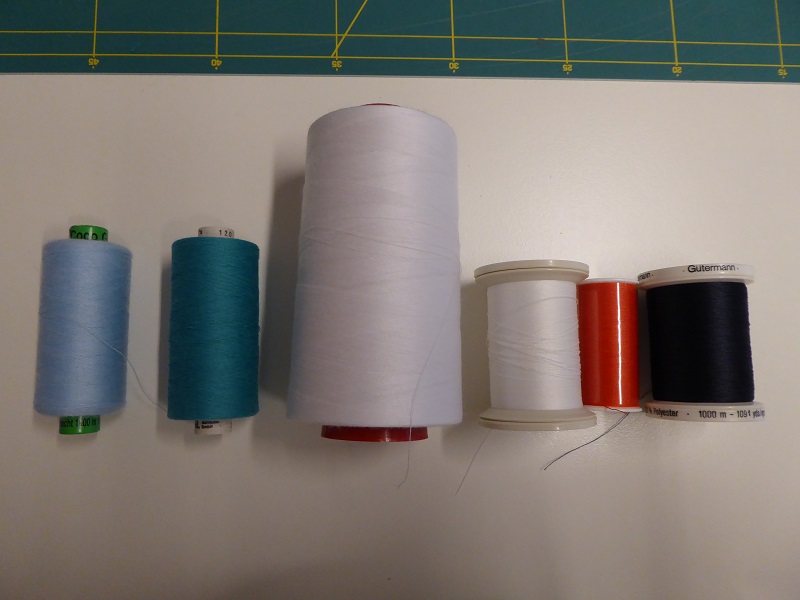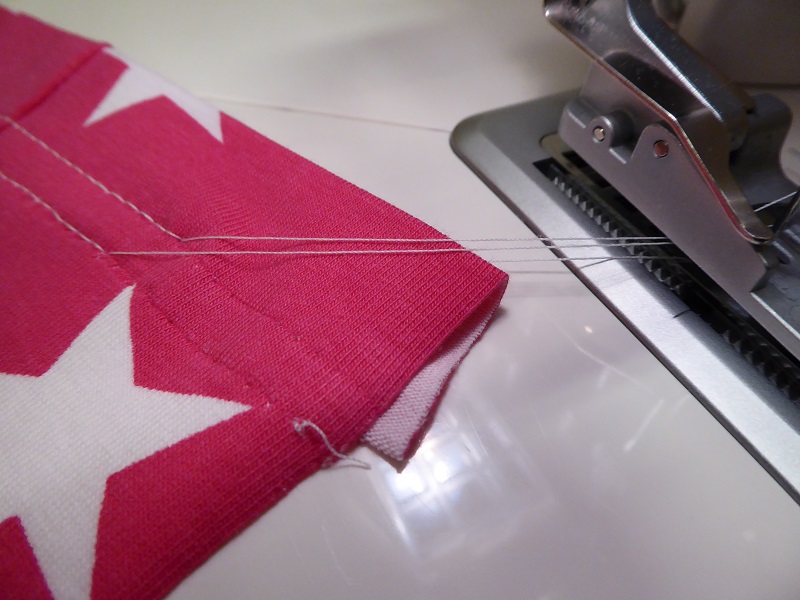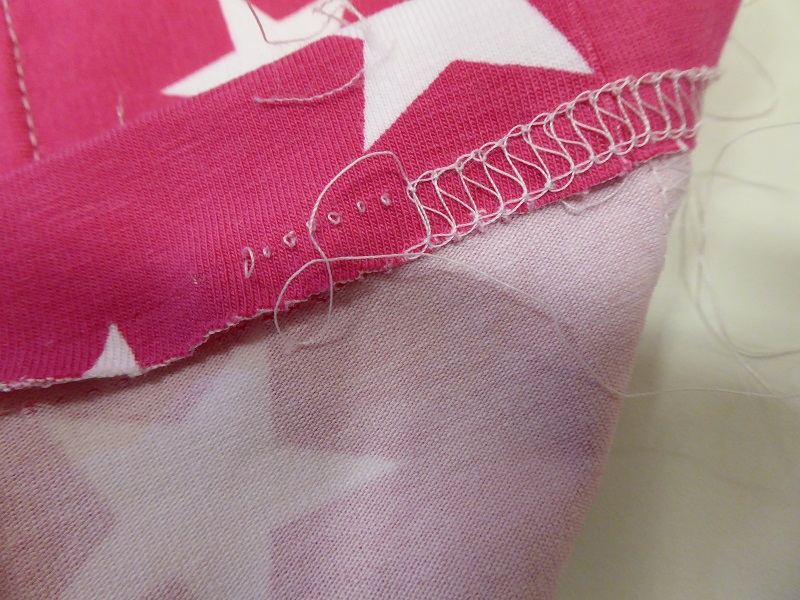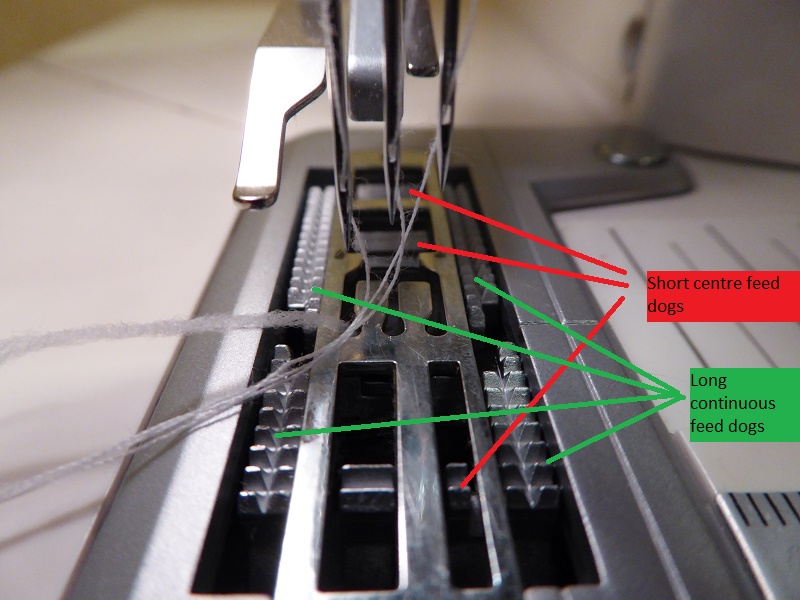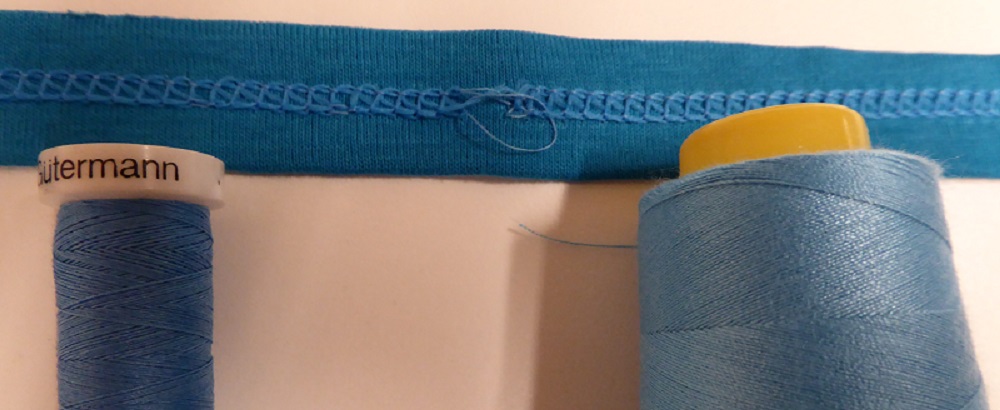User Tools
Sidebar
Table of Contents
When things go wrong
Unlocking the stitch
Imagine I notice while sewing that the outcome is not as desired! The easiest way to undo what has been done is to raise the presser foot and turn the hand wheel a full turn clockwise to unlock the last stitch. The needles will go down into the fabric and back up again and then the fabric can be pulled towards the left. The needle and looper threads can be pulled apart.
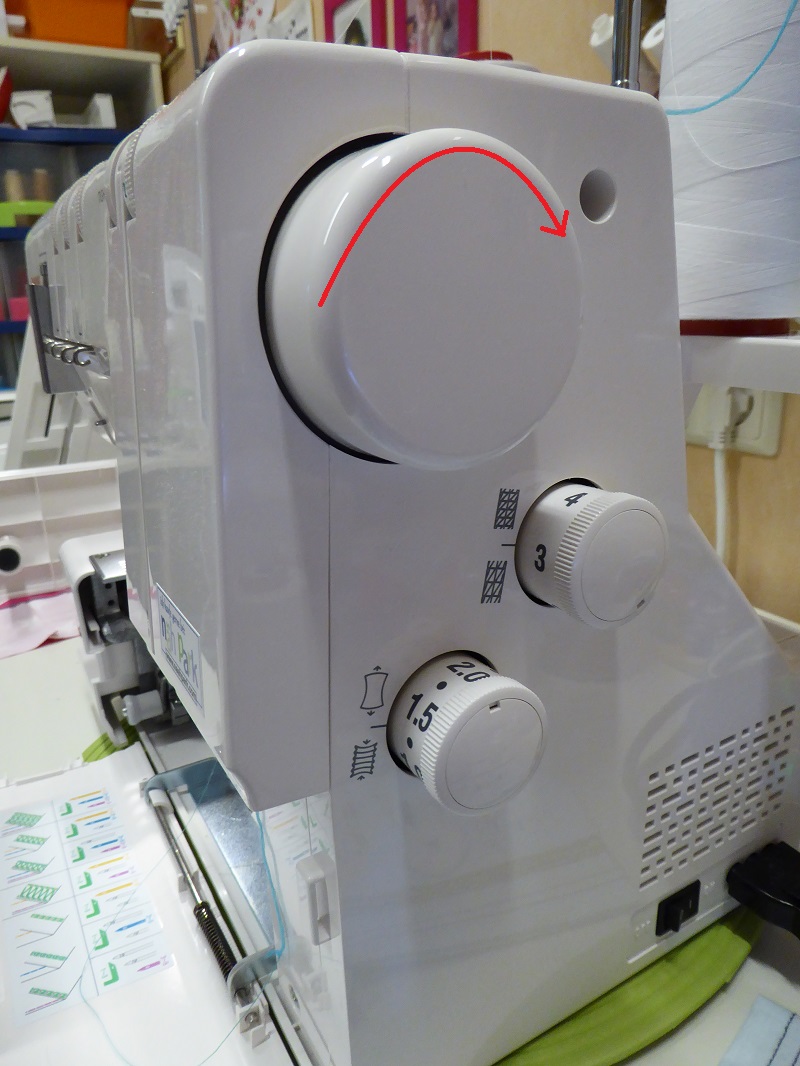
Removing the stitches
Alternatively, using the seam ripper, I can undo a few of the last stitches, gently pull the needle threads and the looper thread and bingo, I am ready to start over.
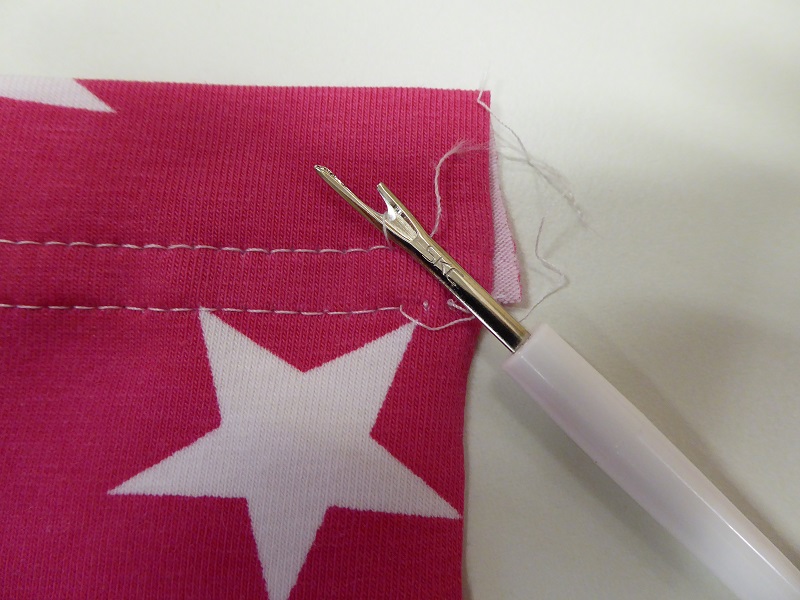
Skipped stitches
Maybe I should have started with this topic first since it seems to be a big concern among coverstitchers, often taking root even before a machine has been purchased.
OK, skips happen, that is a fact of coverstitch life. But there are simple ways of keeping this to a minimum.
Needles as I know them
One cause of skipped stitches is using the wrong size needle. When coverstitching, the thread has to move back and forth through the eye of the needle and along the groove in the front part of the shaft. When the needle is the right size for the thread, fabric and the number of layers, the eye and the groove are both large and wide enough to enable the needle thread to move freely. Strategy number one for me is to check my needle size and most of the time I use a size 90/14. I have used this successfully for knits and woven fabric such as denim.
Please notice the difference in the size of the eye and the groove of the needles in the picture below, the one on the right hand is a size 90/14 and it has a larger eye and a wider groove.
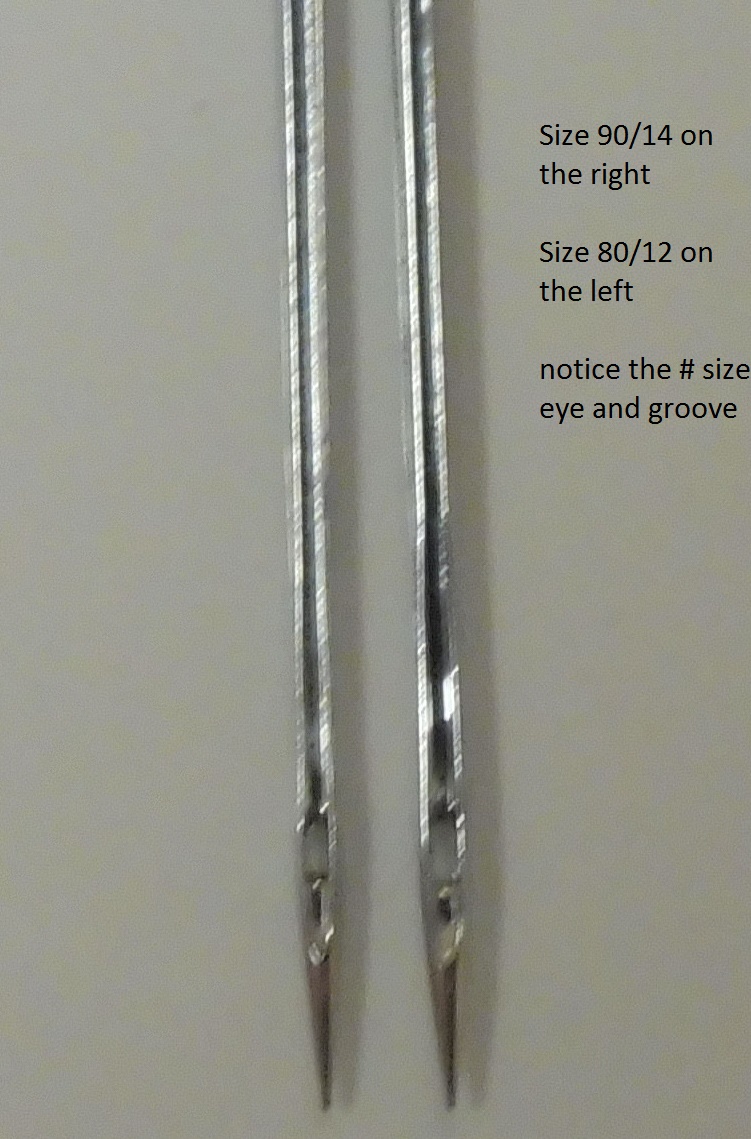
Another reason for stitches skipping is the wrong needle type. Warning the following does not apply to certain brands of coverstitch machines, it applies to all those that use the ELX705 system. When sewing knits, especially those with a “lycra” (a spandex brand trademark) content, I use ELX705 SUK needles. The SUK needle has a regular ball point which is best suited for knits. The ELX705 regular needle has a light ball point and is best suited for wovens.
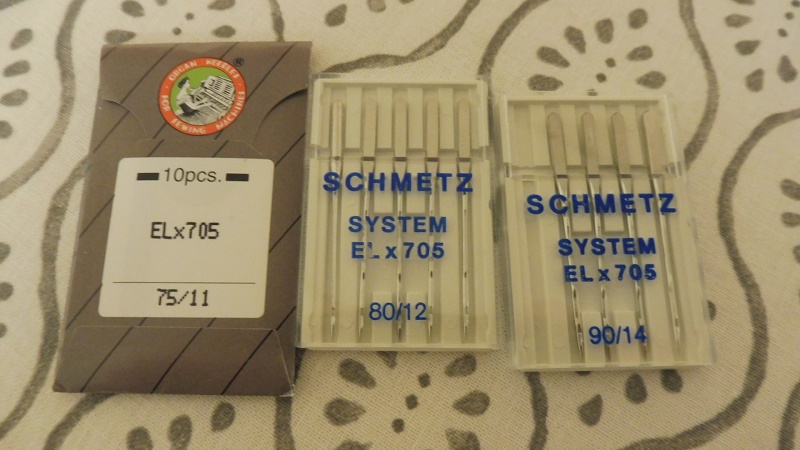

When I run out of ELX705 SUK needles size 90, I use an ELX705 regular size 90 rather than an ELX705 SUK size 80. With knit fabric, the right size seems more important than the right type for avoiding skipped stitches. All in my experience of course. I only switch to size 80/12 for very delicate knit fabrics, but if your experience differs, please do what works for you!
In the examples below I used my Babylock Coverstitch machine for top stitching woven fabric. The top image shows the 2 needle narrow coverstitch going over rick rack trim. This did NOT work well, I had several skipped stitches. The reason I used my BLCS machine was that I had the right color thread in it and my sewing machine was threaded with a different color for other parts of the same project. I was lazy and left the ELX705 SUK (ball point) size 90 needles in the machine and they did not work well on the woven cotton fabric and rick rack trim.
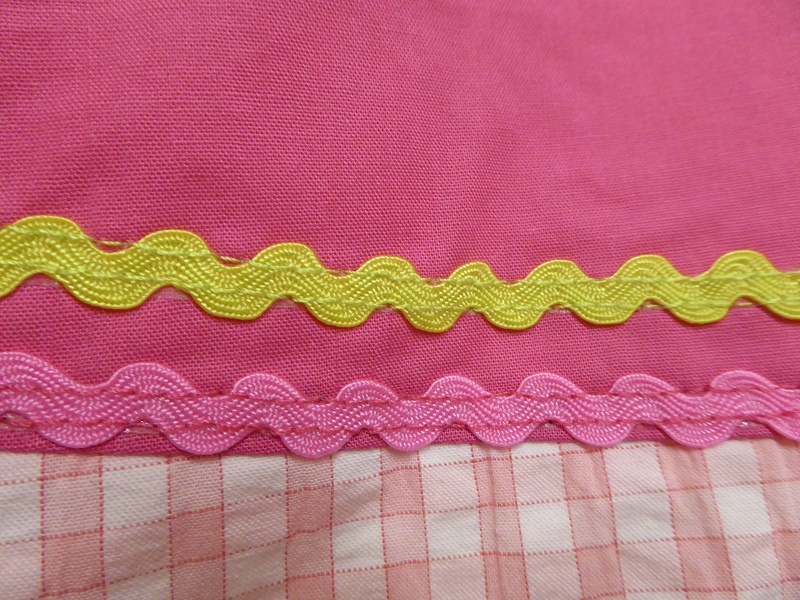
In the second image I used the same SUK needles with the chain stitch and stitched two rows close together. There I had no skips. I am guessing that it wasn't just the needle point that caused the skip, maybe the fact that there were an equal number of layers every time the needle pierced, improved the stitch regularity? The skips in the previous example always happened in spots where the needle was just piercing the cotton between the rick rack. Maybe this affected the thread tension or maybe there was some subtle slipping while sewing??

In the third image I changed to ELX705 regular needles size 90, and did several rows of two needle narrow coversticthing, some over a seam with rick rack and some over a single layer of cotton fabric and rick rack and in all cases not a single skip. So far my conclusion is that the reverse is true for woven fabrics; the wrong needle type may cause skipped stitches.
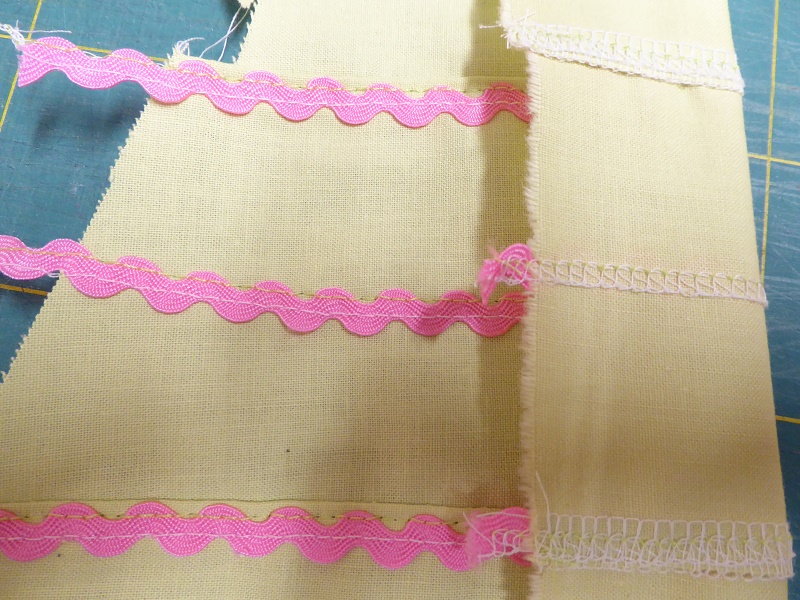
Move it, move it, move it.....
Another important cause of skipped stitches, is stitches getting too short because the fabric is not feeding adequately. The stitches may get shorter as I sew over a hump and to compensate for that I snip like this or use a hump jumper. With the Janome 2000 CPX it is also possible to set the looper tension temporarily to “tight” while going over a hump. That may help prevent skipped stitches but I still prefer to concentrate on keeping the fabric moving and if necessary, I gently pull the fabric behind the presser foot.
Get to know the feed dogs
I have tested this only on a Babylock BLCS, a Janome 2000 CPX and a Pfaff 4874 so my experience does not cover other brands of machines and therefore the following may not correspond with your experience. On my Babylock simply increasing the differential setting usually improves the feeding of heavier fabric or multiple layers. On my Janome and my Pfaff machines I need to increase both the stitch length and the differential to enhance the feeding.
Even feeding is most likely to happen when the bulkiest part underneath the presser foot is right there where the longer continuous feed dogs are. In the image below you can see that these longer feed dogs are on the left and on the right side. In the center there are several short feed dogs but there is a large space where there is no feeding to allow for the needles to move up and down.
Now imagine top stitching a seam and the bulkiest part being in the center, being fed by those short feed dogs? Beside it, going over the longer feed dogs, there may be just one layer of fabric or fewer layers of fabric. When that is the case the risk of irregular feeding increases and with it the risk for skipped stitches. So I prefer to do top stitching so that the bulkiest part of a seam is being properly gripped by at least one of those longer feed dogs. My Babylock Coverstitch machine seems to have more effective feed dogs in the center as well as a better positioning of the presser foot, so the risk for skipped stitches is considerably less on a Babylock BLCS. I intend to expand a little on this in the chapter on Top stitching.
Needle threads looping on the wrong side
Ever come across this? It happens to me all the time. In this case I had been sewing a chain stitch with 1 needle and then I added a second needle but forgot to lift the presser foot, so that the thread would slide between the tension discs.
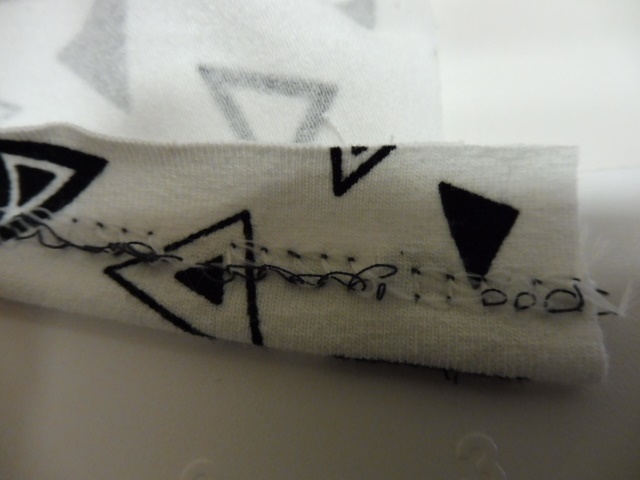
This is what it looks like when the presser foot is down and the thread is not engaged properly between the discs:
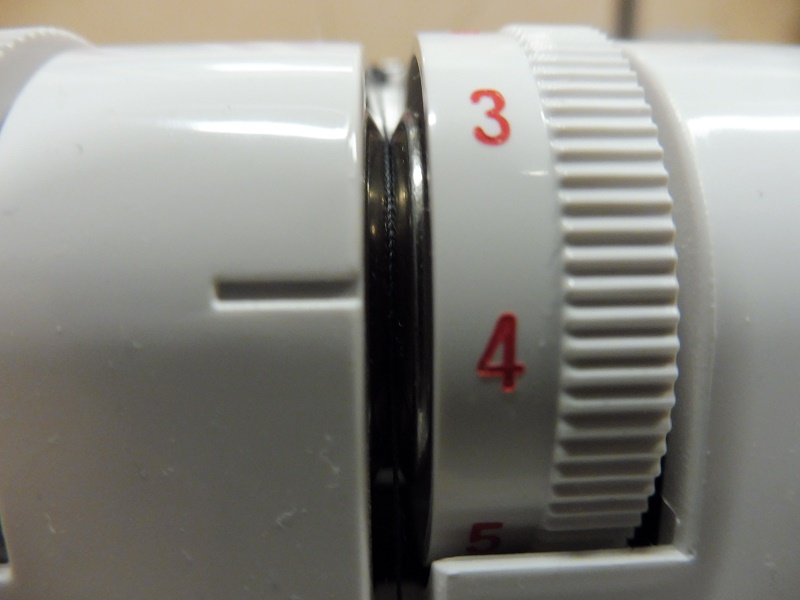
And this is what it should look like:
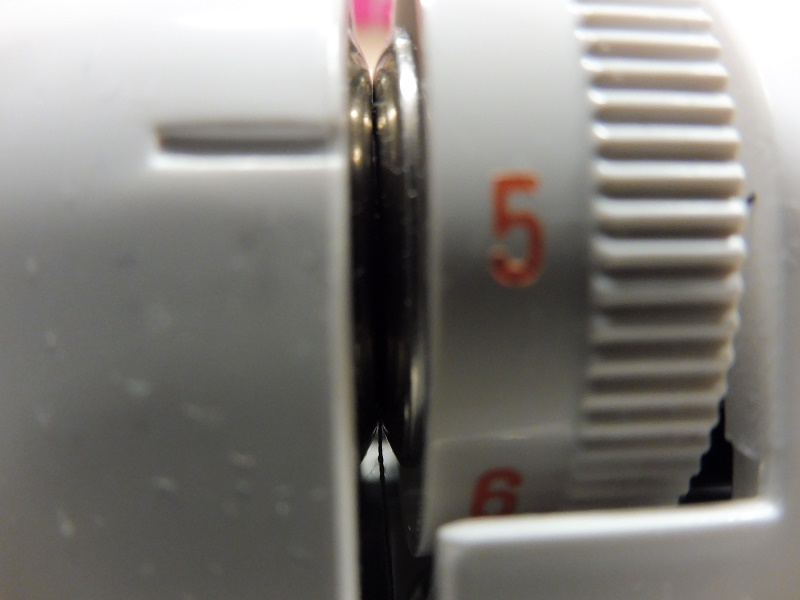
Which is why it is always a good idea to test on a scrap!
Starting to sew on the edge
When starting to sew on the edge, f.ex. when stitching a tunnel for a drawstring or top stitching the edges of a jacket, I discovered that it is important to hold on to the threads while starting that first stitch. If there is not enough tension on the threads, the first stitches may not form properly.
In the image below the stitching was supposed to start right on the edge.
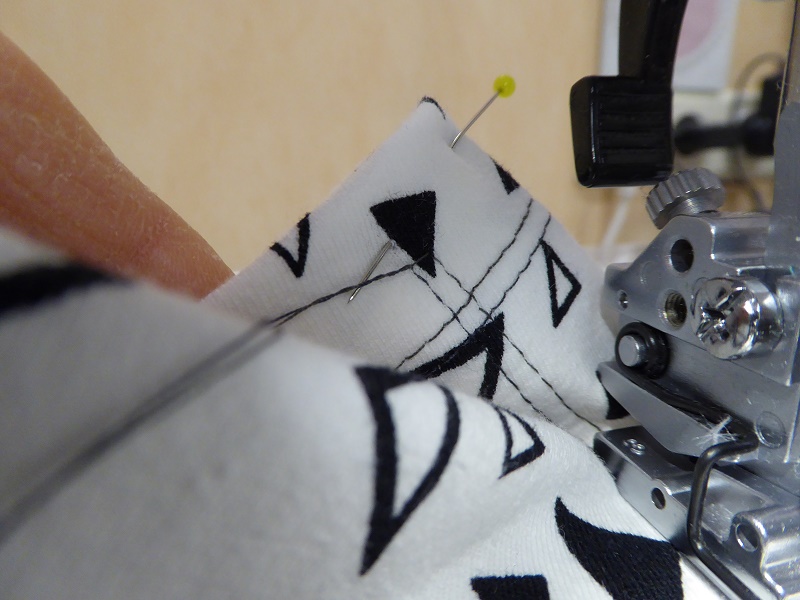
Thread, what kind?
I have no fool proof recipe for thread choice. Both cheap and expensive and everything in between may work well. In my opinion it is important to differentiate between what looks good and what works. A particular thread may have a beautiful quality, sheen, color etc.. but if it does not unwind well it may cause skipped stitches or irregular stitches. Please notice the image below with two samples of turquoise thread, Gütermann on the left and an overlock quality on the right. The stitches with the overlock thread are more regular on the looper side but the needle threads of the Gütermann show off nicer on the needle side. As a hobbyist I do not want to invest in various cones of high quality sewing thread, which exist but are usually not available in the average haberdashery shop or department. So I try to work around this challenge.
On the whole I get the best results with thread that unwinds freely. Cones are more likely to unwind well. Plastic spools may have tiny irregularities so if I remember, I put a slightly larger spool cap on top of those for coverstitching. Spools with a paper core may work very well or not at all.
Please notice from left to right the light blue and turquoise spools with a paper core. The light blue always produces great results and the turquoise always causes some kind of irregularity. The difference is in the way the thread is wound. Notice the soft rounded edge on the light blue one and the straight edge on the turquoise one? The turquoise thread tends to get stuck briefly sometimes as it reaches the end of the spool before unwinding in the other direction. Sometimes placing the spool so that the thread unwinds counter clockwise lessens the risk of irregularities.
